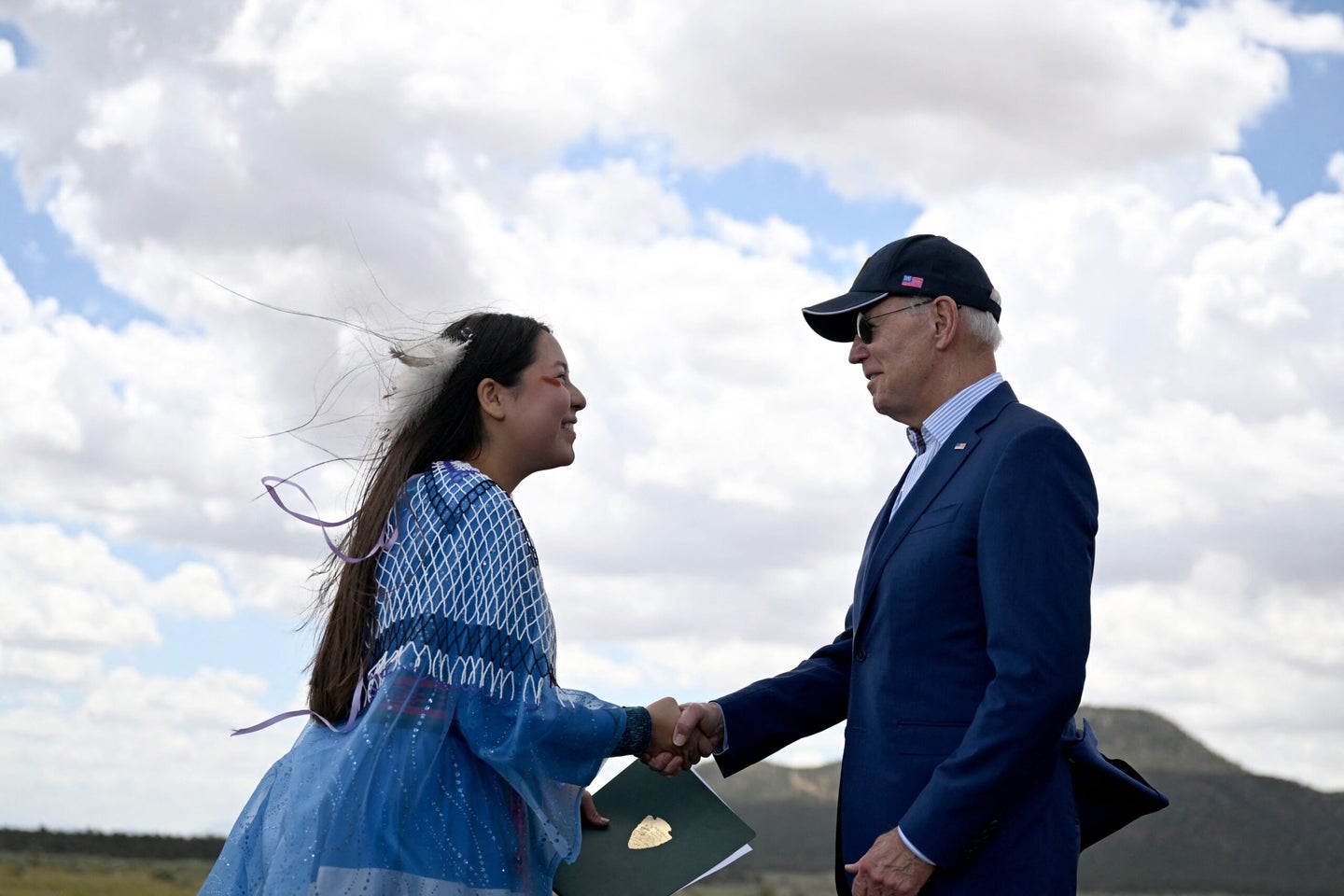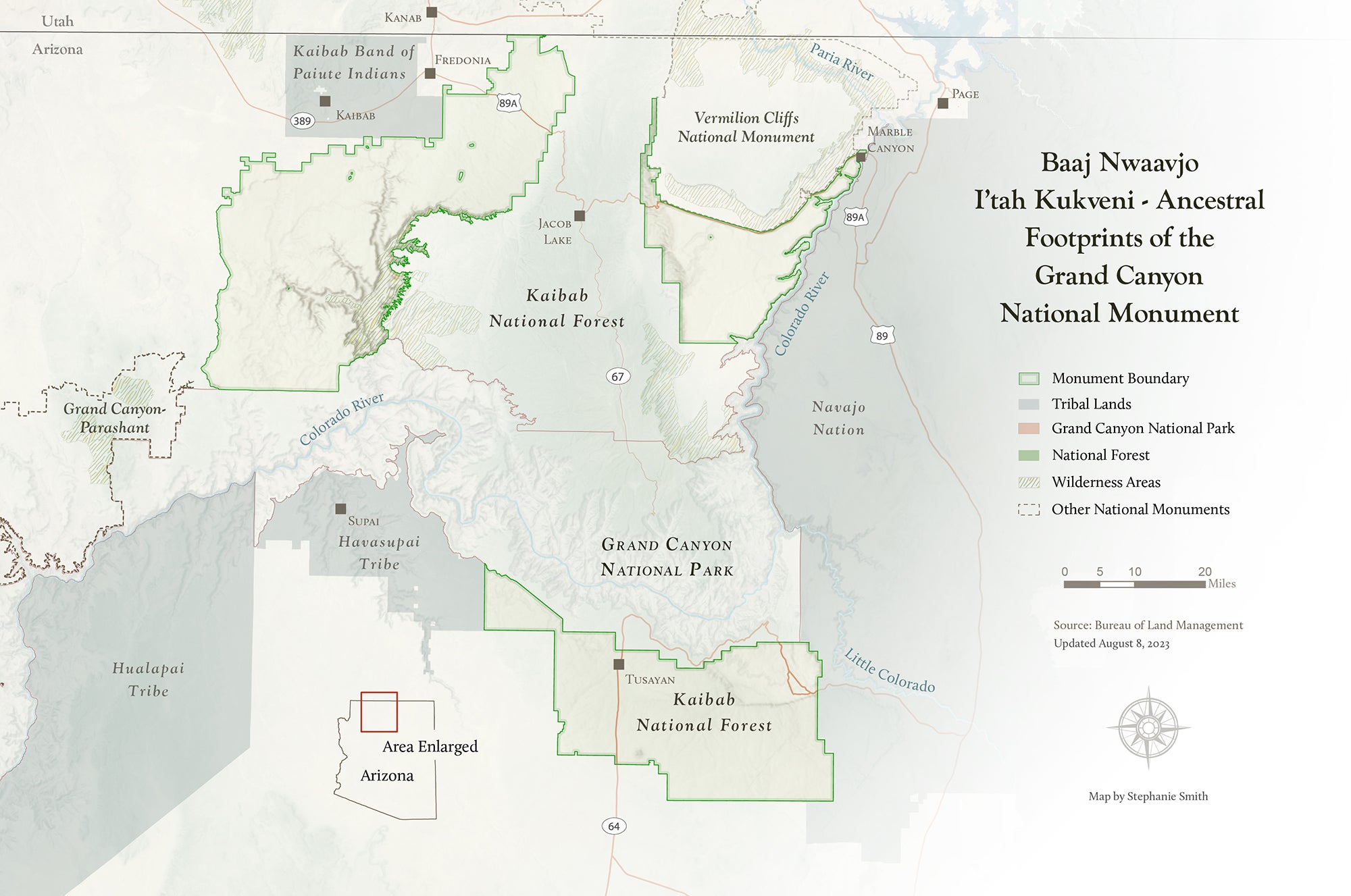
On August 8, President Joe Biden signed a national monument designation for the greater Grand Canyon, turning a multi-year dream by local Native American tribes and environmentalists into a reality. This is the fifth national monument declaration of his presidency, and it protects the area from potential uranium mining.
[Related: The 10 most underrated national parks in the US.]
The existing grazing leases and permits, hunting and fishing, and mining claims in the roughly 917,000 acres of public land are also protected. The land is just to the north and south of the existing Grand Canyon National Park and has numerous plateaus, canyons, and tributaries that house bison, bighorn sheep, elk, and a rare species of cactus. It will also preserve cultural and religious sites and the water sources that flow into the Colorado River.
Arizona tribes have been advocating for President Biden to use the Antiquities Act of 1906 to create a new national monument called Baaj Nwaavjo I’tah Kukveni. Baaj Nwaavjo means “where tribes roam,” for the Havasupai people and “I’tah Kukveni” translates to “our footprints,” for the Hopi tribe. The national monument will officially be called Baaj Nwaavjo I’tah Kukveni – Ancestral Footprints of the Grand Canyon National Monument.
“Today I’m proud to use my authority under the Antiquities Act to protect almost one million acres of land around Grand Canyon National Park as a new national monument – to help right the wrongs of the past and conserve this land … for all future generations,” Biden said during a speech near the Grand Canyon. “Preserving these lands is good not only for Arizona, but for the planet. It’s good for the economy. It’s good for the soul of the nation. And I believe with my core — in my core it’s the right thing to do.
President Biden also tied the new designation to a larger push to combat climate change by his administration. He noted this summer’s extreme heat, which has been especially punishing in places like Phoenix, about 223 miles away from the Grand Canyon.
“Our extreme heat is America’s number one weather-related killer. Extreme heat kills more people than floods, hurricanes, and tornadoes combined,” said Biden. “And it’s threatening the farms, the forests, and the fisheries [that] many families depend on to make a living. But none of this need be inevitable.”
In 2012, President Barack Obama blocked new mining in federal land nearby, but the protections are due to expire. While this new designation would protect the area in perpetuity, mining industry officials said they will attempt to challenge the new decision. They are particularly interested in uranium mining, which environmental advocates are strongly against. They have long argued that the region only contains about 1.3 percent of the United States’ uranium reserves.
[Related: How tribal co-managing movements are transforming the conservation of public lands.]
“Many of us have worked for decades to safeguard our Grand Canyon homelands from desecration at the hands of extractive, harmful operations like uranium mining, and today, with the designation of Baaj Nwaavjo I’tah Kukveni, we see these lands permanently protected at last,” Grand Canyon Tribal Coalition coordinator Carletta Tilousi said in a statement, according to CNN.

Protecting Arizona’s clean water supply is a top priority with about 97 percent of the Western state’s voters, according to a poll by Impact Research. The Grand Canyon Trust says that this new move safeguards precious groundwater resources that are vital to tribal and local communities and the Grand Canyon’s seeps and springs, while honoring the deep connections that Native peoples have to the Grand Canyon region.
The monument was proposed by the Havasupai Tribe, Hopi Tribe, Hualapai Tribe, Kaibab Band of Paiute Indians, Las Vegas Tribe of Paiutes, Moapa Band of Paiute Indians, Paiute Indian Tribe of Utah, Shivwits Band of Paiutes, Navajo Nation, San Juan Southern Paiute Tribe, Yavapai-Apache Nation, Zuni Tribe, and Colorado River Indian Tribes.
Arizona lawmakers, including Representative Raùl Grijalva and Senator Kyrsten Sinema, have also advocated for the lands surrounding the Grand Canyon be protected.
The post Nearly 1 million acres of land near the Grand Canyon is now a national monument appeared first on Popular Science.
Articles may contain affiliate links which enable us to share in the revenue of any purchases made.
from | Popular Science https://ift.tt/vU8iICx



0 Comments